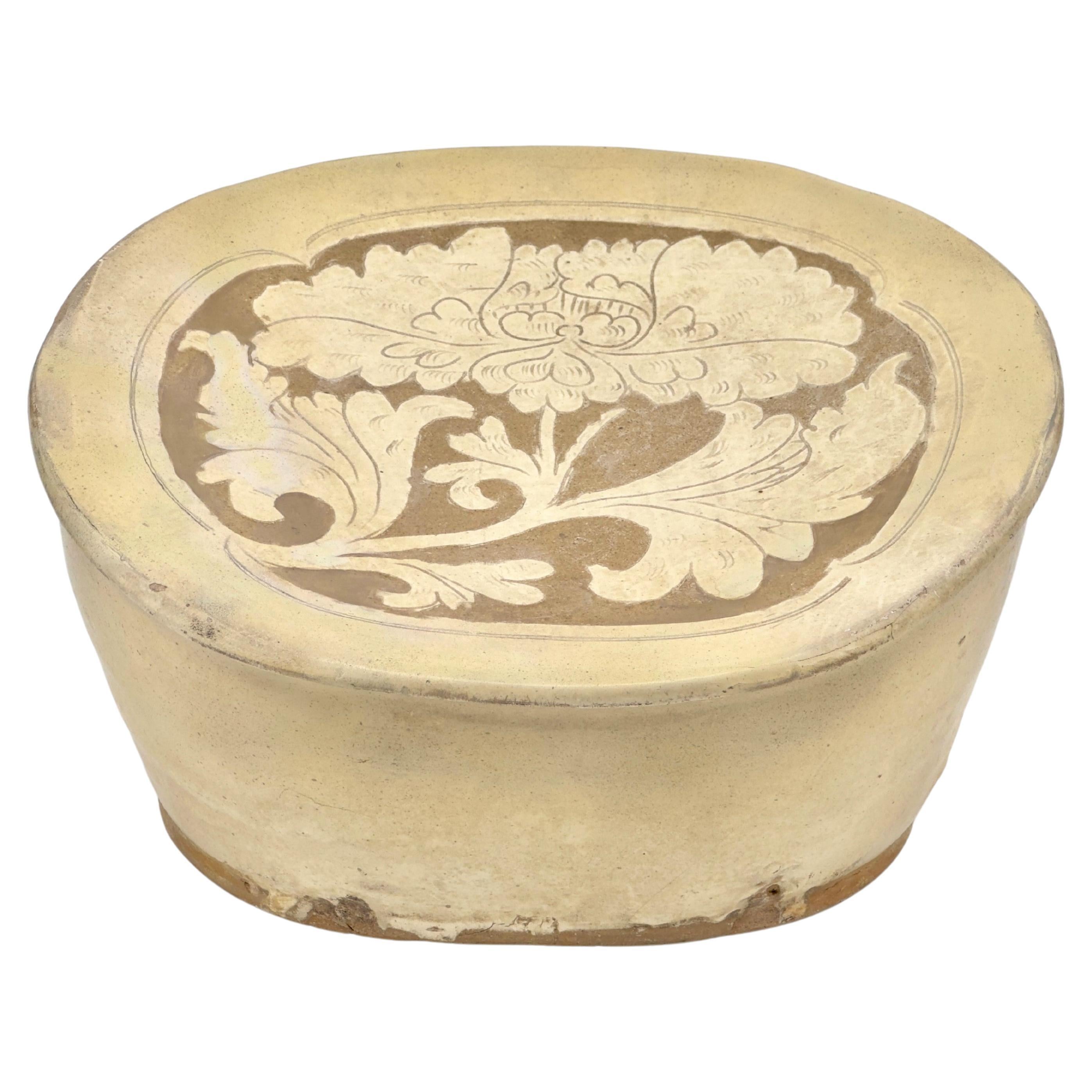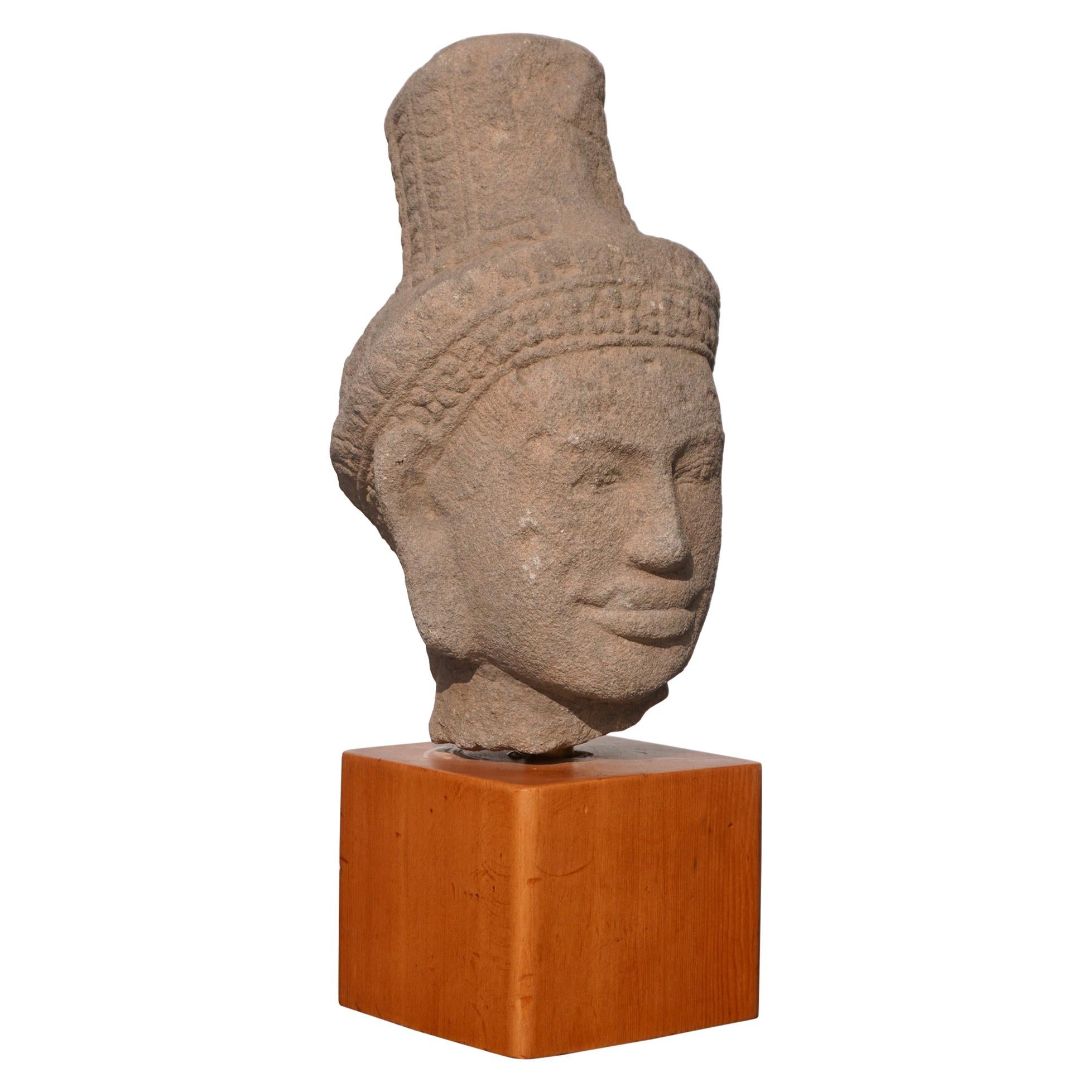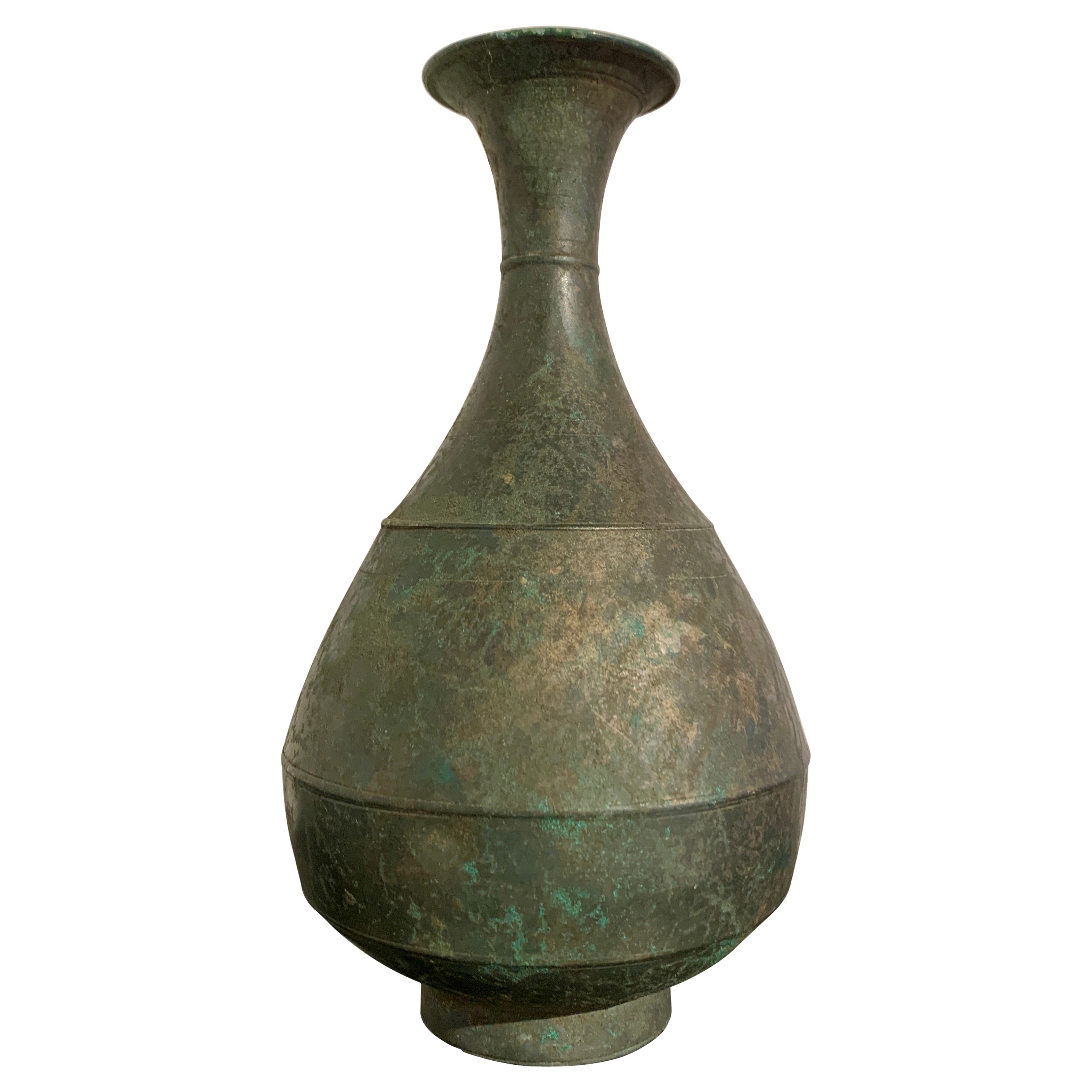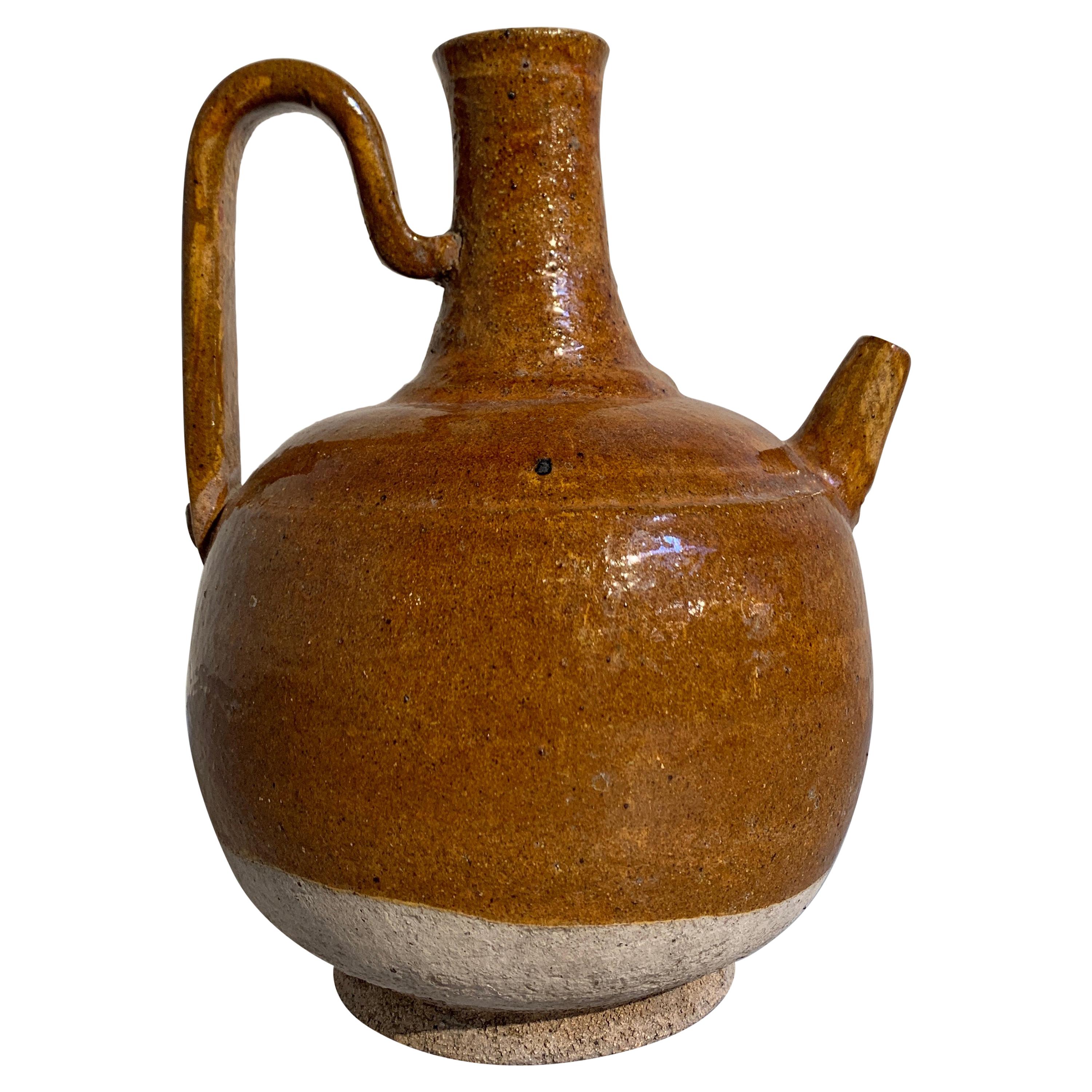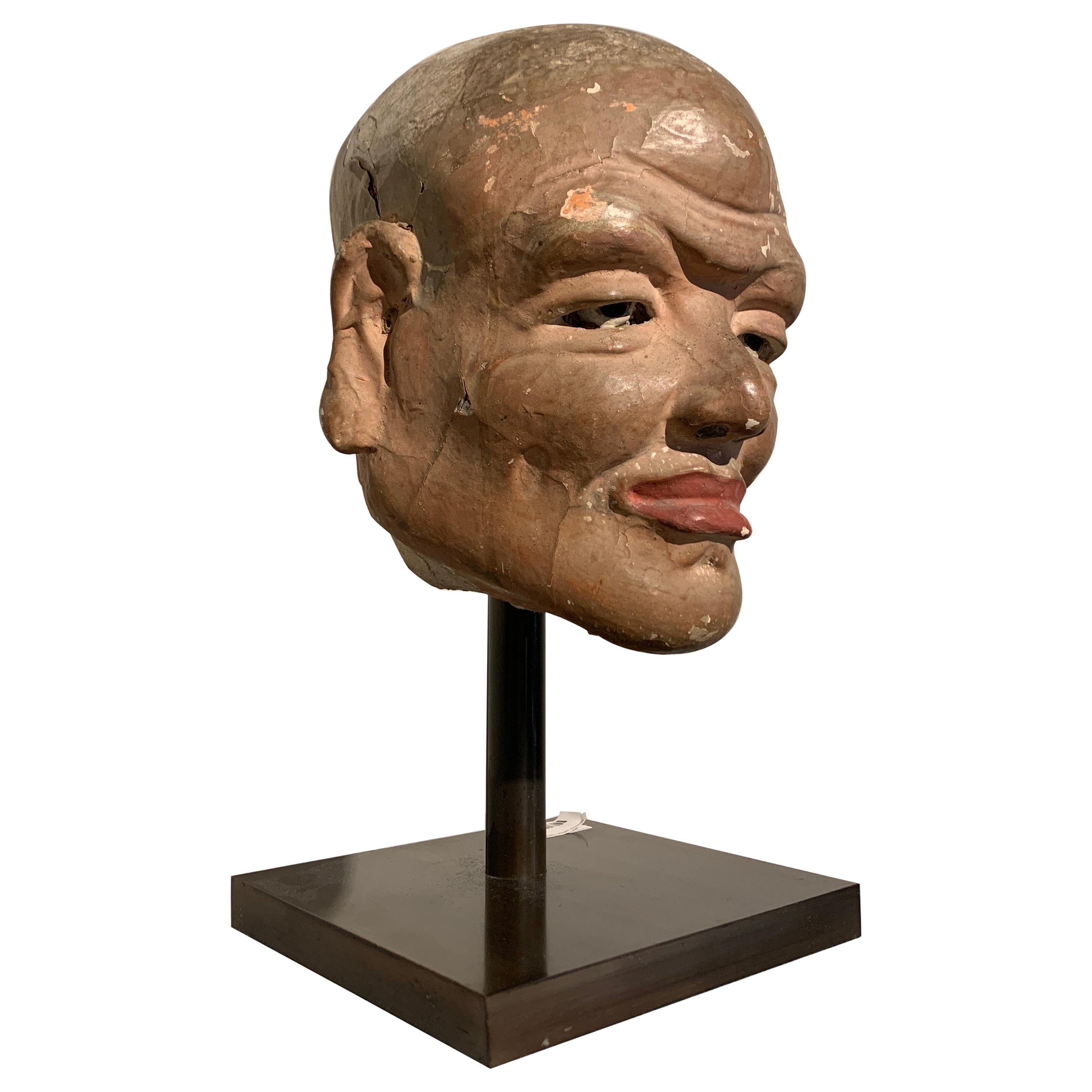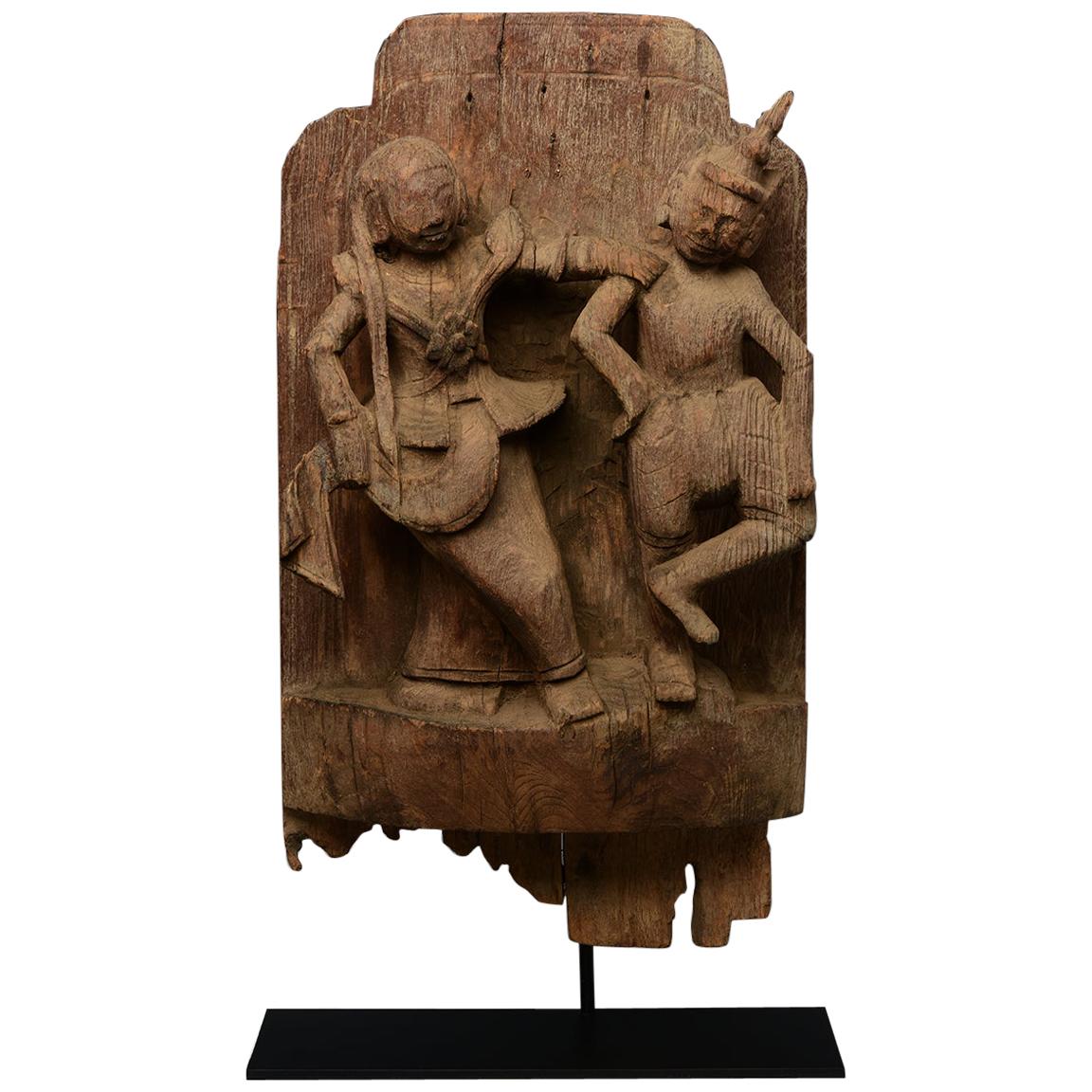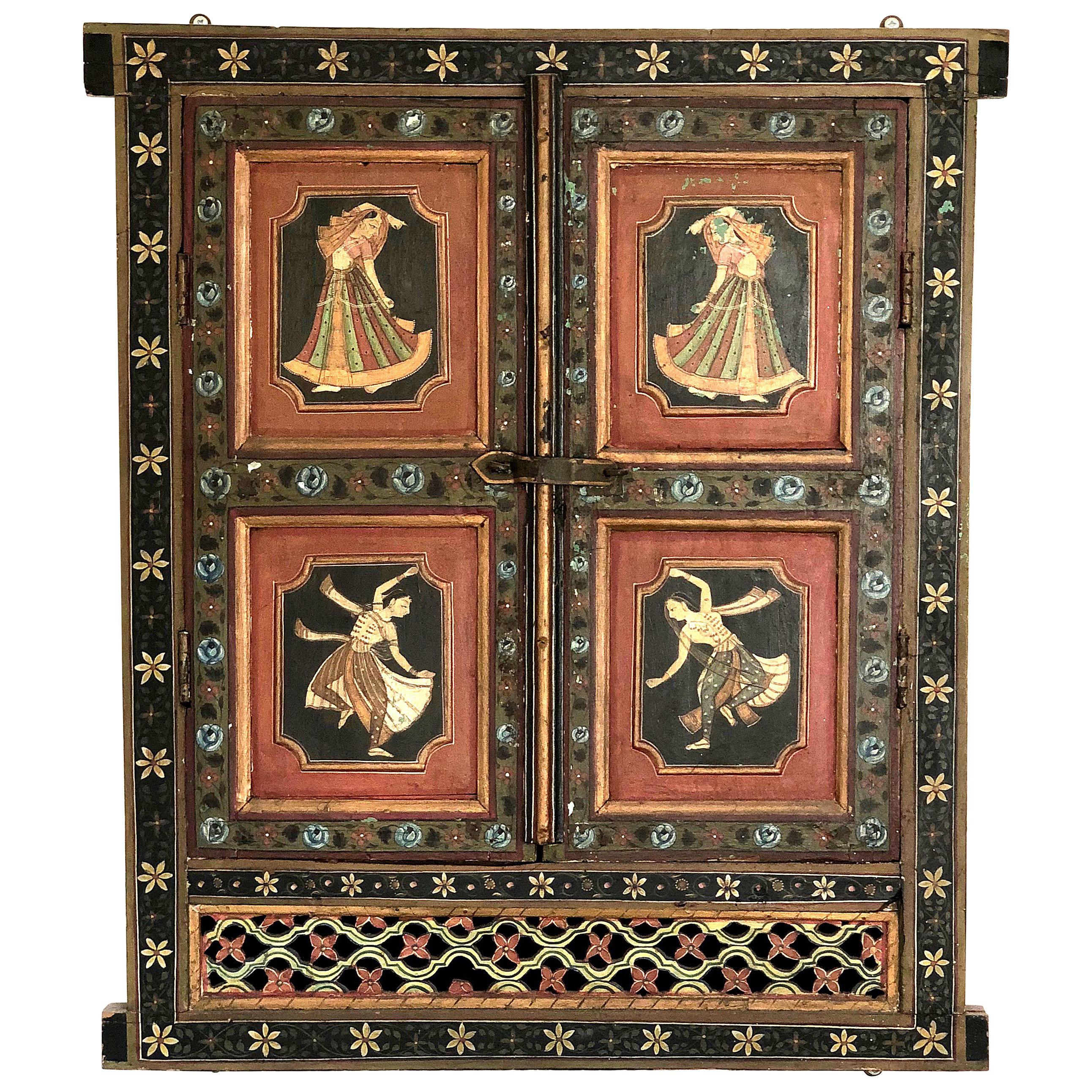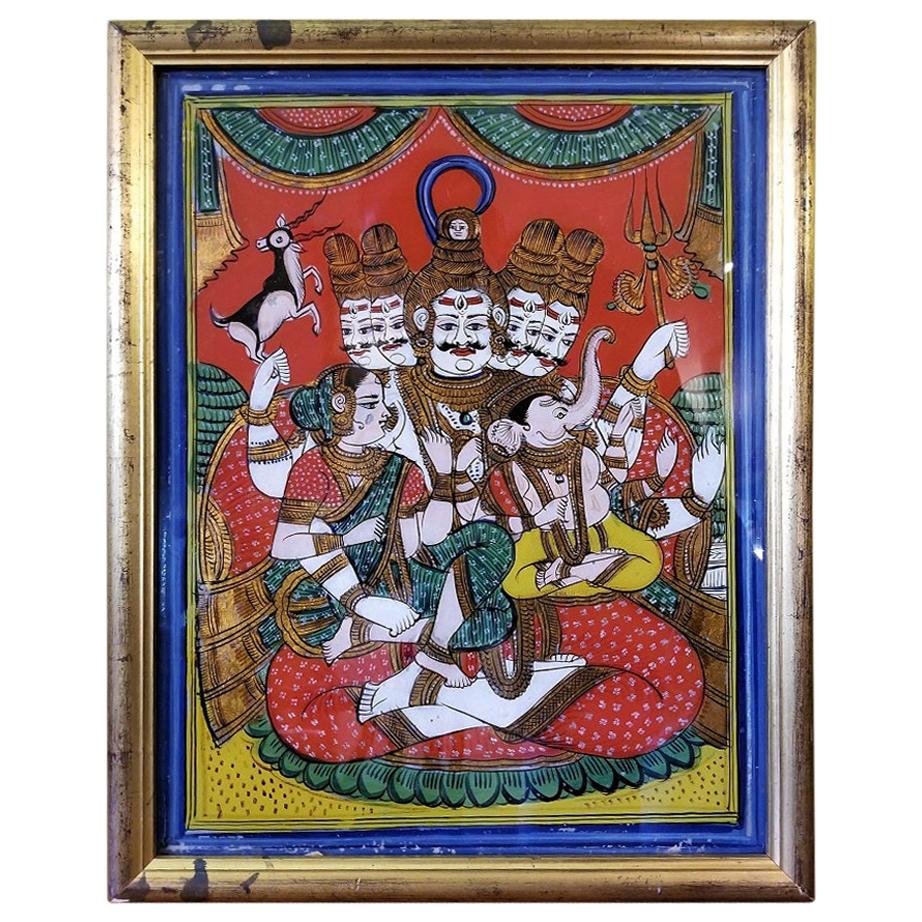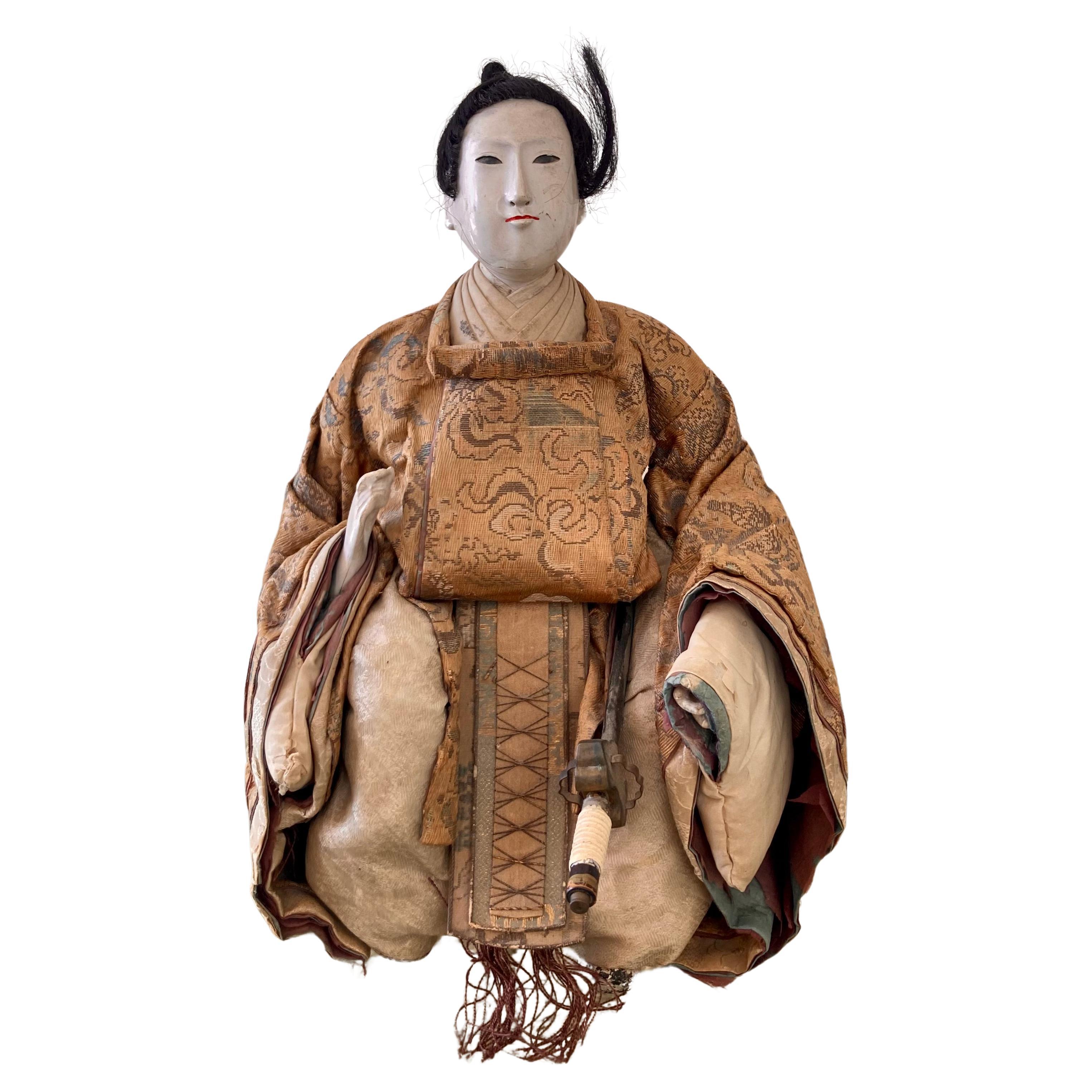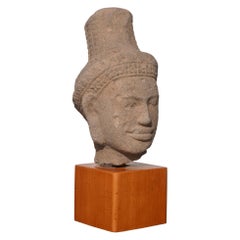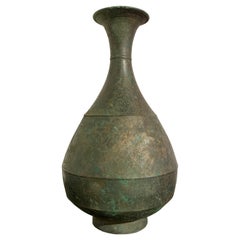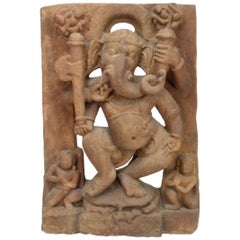
Dancing Cosmic Ganesh Uttar Pradesh, 11th Century
View Similar Items
1 of 1
Dancing Cosmic Ganesh Uttar Pradesh, 11th Century
About the Item
- Dimensions:Height: 29.53 in (75 cm)Width: 20.48 in (52 cm)Depth: 6.3 in (16 cm)
- Style:Other (Of the Period)
- Materials and Techniques:
- Place of Origin:
- Period:
- Date of Manufacture:11th Century
- Condition:Wear consistent with age and use.
- Seller Location:Hovmantorp, SE
- Reference Number:1stDibs: LU3530310295913
You May Also Like
- Khmer Sandstone Buddha Shiva Head 11th CenturyLocated in Dallas, TXA sandstone figure head of Shiva Khmer, Baphuon style, circa 11th century. A rare Khmer gray sandstone head of Shiva. The handsome head of the divinity deity Shiva. His face with serene expression, almond-shaped eyes, ridged eyebrows and elongated earlobes, His headdress in tight rows and piled in tresses at the top of the head. Provenance: From a Canadian auction selling the estate of a French gentleman who amassed a large collection of Gandhara, Buddhas and Khmer items throughout his life. Measures: Head: 8 x 4.5 x 4.5 inches (20.5 x 11.4 x 11.4 cm) With stand: 10.7 inches tall Similar to item at Christies SALE 2828, Lot 1124 Indian and Southeast Asian Art 19, March 2014, New York. Shiva ( Siva, lit. the auspicious one) also known as Mahadeva ( lit. the greatest god) is one of the principal deities of Hinduism. He is the Supreme Being within Shaivism, one of the major traditions within contemporary Hinduism. Shiva is known as "The Destroyer" within the Trimurti, the Hindu trinity that includes Brahma and Vishnu. In Shaivism tradition, Shiva is the Supreme being who creates, protects and transforms the universe. In the tradition of Hinduism called Shaktism, the Goddess, or Devi, is described as supreme, yet Shiva is revered along with Vishnu and Brahma. A goddess is stated to be the energy and creative power (Shakti) of each, with Parvati (Sati) the equal complementary partner of Shiva. He is one of the five equivalent deities in Panchayatana puja of the Smarta tradition of Hinduism. According to the Shaivism sect, the highest form of Shiva is formless, limitless, transcendent and unchanging absolute Brahman,[16] and the primal Atman (soul, self) of the universe. There are many both benevolent and fearsome depictions of Shiva. In benevolent aspects, he is depicted as an omniscient Yogi who lives an ascetic life on Mount Kailash[1] as well as a householder with wife Parvati and his two children, Ganesha and Kartikeya. In his fierce aspects, he is often depicted slaying demons. Shiva is also known as Adiyogi Shiva, regarded as the patron god of yoga, meditation and arts. The iconographical attributes of Shiva are the serpent around his neck, the adorning crescent moon, the holy river Ganga flowing from his matted hair, the third eye on his forehead, the trishula or trident, as his weapon, and the damaru drum...Category
Antique 15th Century and Earlier Asian Antiquities
MaterialsSandstone
- Korean Bronze Bottle Vase, Goryeo Dynasty, 11th/12th Century, KoreaLocated in Austin, TXAn attractive Korean Goryeo Dynasty bronze bottle vase with traces of gilding, 11th - 12th century, Korea. The vase of typical form, with a short recessed foot supporting a pear s...Category
Antique 15th Century and Earlier Korean Metalwork
MaterialsBronze
- Celadon Vase, Five Dynasties or Northern Song dynasty, 10th-11th CenturyLocated in seoul, KRThe form of Longquan celadon vases from the Northern Song dynasty evolved from an early design with a long neck and tapering body to a later ovoid body with a shorter neck. Over time, the glaze developed a more olive tone, and the carved decorations became more pronounced and intricate. Examples of such vases include one without a cover dated to the Yuanfeng era (1078~1085) and documented in literature, and another similar vase without loop handles preserved by the Qingyuan County Cultural Relics Bureau. An earlier example featuring loop handles and a lotus-like cover is also mentioned in historical texts. The use of Longquan covered vases, especially as funerary jars for offerings like wine and grains, was highlighted by an inscription on a piece from the Sir Percival David Collection, London. This inscription wishes for the vessel to preserve fragrant wine for centuries, blessing the owner with prosperity, longevity, and a vast lineage, dated to the third year of the Yuanfeng period (1080). This practice was common in the regions of Southern Zhejiang and Northern Fujian. A similar celadon vase from the Linyushanren collection was auctioned at Christie’s Hong Kong, emphasizing the cultural and historical significance of these artifacts. Period : Five Dynasties or Northern Song Dynasty Type : Celadon, Zhejiang province Medium : Celadon Size : 31.5 cm(Height) x 11.5(Diameter) Provenance : Acquired in late 1990s from Hongkong Reference : 1) The British Museum image id - 01613270570 2) Christies New York 23–24 MAR 2023 - Important Chinese Ceramics and Works of Art - Lot 1012 (Price Range : USD 18,000 – USD 25,000 / Type : Related) 3) National Gallery of Victoria - Accession Number - AS5-1973 * Celadon from Five Dynasties (907~960) to the early Northern Song Dynasty (960~1127) The period from the Five Dynasties (907~960) to the early Northern Song Dynasty (960~1127) marked a significant transitional phase in the development of Chinese celadon ceramics...Category
Antique 15th Century and Earlier Chinese Ming Antiquities
MaterialsCeladon
- Cizhou carved bean-shaped pillow, Song-Jin Dynasty, 11th-12th centuryLocated in seoul, KRCrafted from fine clay, the pillow's surface boasts a sophisticated carved design featuring a floral motif that is both symmetrical and organic. The interplay of the earthy tones and...Category
Antique 15th Century and Earlier Chinese Chinoiserie Antiquities
MaterialsStoneware
- Chinese Liao Dynasty Amber Glazed Stoneware Strap Handle Ewer, 11th CenturyLocated in Austin, TXA lovely Chinese amber glazed pottery pouring vessel, Liao Dynasty (907 to 1125 AD). The vessel featuring a globular body with an elongated neck sligh...Category
Antique 15th Century and Earlier Chinese Tang Ceramics
MaterialsStoneware
- Chinese Painted Stucco Head of a Luohan, Song Dynasty, 11th Century, ChinaLocated in Austin, TXA remarkable Chinese life sized painted stucco head of a luohan, Song, Liao or Jin Dynasty, circa 11th century, China. The amazingly life-like figure depicts a luohan (sometime spelled lohan), also known as an arhat, one of the original disciples of the Buddha. The elderly man has been molded in stucco with inset glass eyes and painted with idealized, if slightly exaggerated features. The unidentified luohan sports a bald, or perhaps shaved, domed head above a bulging forehead, symbolizing his vast wisdom. The wrinkles in his furrowed brow, and creases around his eyes add to his realism. The learned man stares out wisely from deep set, heavily lidded inlaid glass eyes that catch the light. The luohan has high cheekbones and a prominent jawline. His lips full and pursed as if about to speak. The corners of his mouth turned up ever so slightly in a faint smile, causing his gaunt cheeks to dimple charismatically. A series of dots above the upper lip indicate he may originally have sported a mustache of real hair. This life sized head with extremely realistic features fits into a very narrow time frame of Chinese Buddhist art. Perhaps the most recognized group of large, finely molded Chinese luohan...Category
Antique 15th Century and Earlier Chinese Sculptures and Carvings
MaterialsGlass, Stucco
